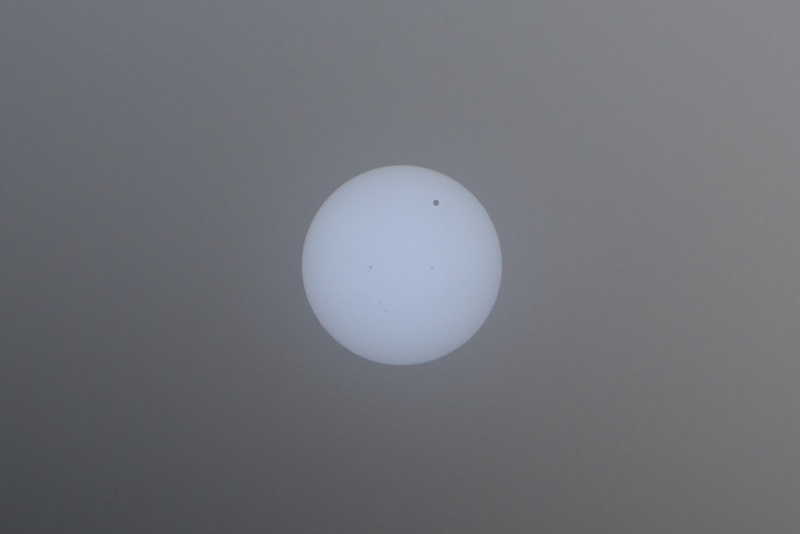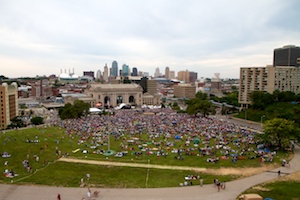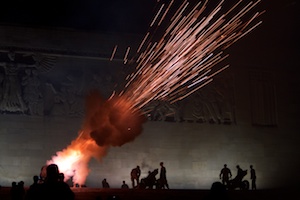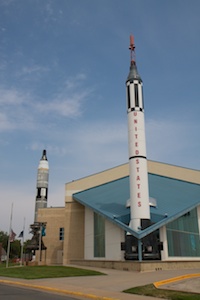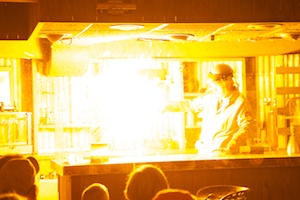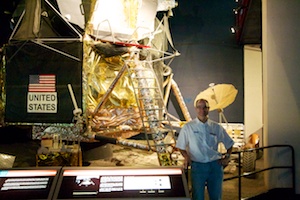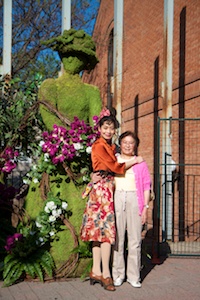My good friend Don and his fiancé Ke invited Rosa and me to their wedding in Las Vegas. Rosa was not able to go due to work commitments.
I almost did not go either. Three days before my flight, I hurt my back with heavy lifting on the weekend and then bowling at the MCO general meeting. I was in a lot of pain. I was afraid I had a lower back hernia (not a herniated disc, but a muscle hernia). I was able to see a doctor who said it was only a muscle spasm, and prescribed some pain killers, anti-inflammatories and muscle relaxants. The muscles of the lower back are not prone to hernia injuries.
I was feeling a bit better the next day so I went ahead with the trip.

Upon arriving in Las Vegas, I checked-in to a Hilton south of the airport. I gathered up my camera equipment and left for Maverick Helicopter departure location, which was very close to the hotel. Rosa had previously visited Las Vegas before we met, and she pushed me to take the same helicopter tour of the Grand Canyon that she had taken.
It took about 45 minutes to complete the check-in for everyone, and then we were assigned to the different helicopters. There were 7 helicopters that would be involved in the sunset tour.

I made sure that I had a good seat for the flight. I was in the centre seat in front, with lots of glass available for taking pictures. However, in practice it was a little harder than I expected as the glass was curved like a bubble – good for viewing but the distortion limited the directions that allowed for good photos. With weight and space restrictions, I could not bring a camera bag, so I put my wide angle Canon EF-S 10-22mm in one coat pocket and my Canon 550EX flash in my other pocket.
Once everyone was buckled in, the pilot started the engines and did the pre-flight check. Then something magical happened – we gently lifted off and hovered about 30cm above the ground. The feeling of hovering in one place and then slowly pivoting around to face the nearby McCarran International Airport was unlike anything I have ever experienced and was totally unexpected how much it would impact me. The freedom of movement, the graceful but intimate feeling of flight, so close to the earth and yet totally unconnected and free to move in any direction. It was a very special feeling for me.
We skimmed down the airport apron performing the final flight checks before the pilot pulled up on the collector and we soared into the sky. The view was magnificent – the city of Las Vegas falling away and then falling behind, the tops of the hotels along the Strip catching the setting sun.
We flew eastward, north of Lake Mead, up and down through the canyons along the top of what would become the Grand Canyon. The pilot did the expected heart-stopping manoeuvres up over the tops of the ridges and plummeting down the far side. I was having such a good time.
The Grand Canyon is about 450km long, up to 29 km wide at the top, and 1,600 metres deep. Nearly two billion years of Earth’s geological history has been exposed by the Colorado River.

We flew for about 20 minutes to a picnic site at the lower end of the Canyon that had been set up by Maverick for all the guests. They set out drinks, fresh veggies and dip, cheese and crackers. We talked in small groups – my fellow travellers came from all over world – and spent lots of time taking pictures of the surrounding scenery. The top of the Canyon was still catching the sunset and was aglow in pink and rose and orange and red.
After 40 minutes at the picnic site, we all climbed back in the helicopters and flew out of the Canyon and along the eastern side were we rendezvoused for a refuelling stop.
Then we took off for the final leg back to the airport. We flew past the Hoover Dam and then approached the Las Vegas at dusk. The skyline was brilliantly lit up, highlighted by the lights of the Strip.
After touch down, I returned to the hotel exhausted.
The next morning I woke up early due to the 2-hour timezone change. I had a long list of sites I wanted to see, so I checked-out, had a quick breakfast and started off.

My first destination was Red Rock Canyon National Conservation Area, 24km west of downtown. I wanted to do it early in the morning before the heat of the day. There is a one-way 24km long loop road that winds through the area, with parking lots at the various trailheads along the route. I stopped at a few of them to take more pictures and to walk around. With the limited time and the fact that I did not have hiking shoes, I did not stay very long at any stop. The scenery was so beautiful; I want to come back and spend a few days hiking and taking pictures at sunrise and sunset.
The loop road was also popular with bikers (both bicycles and motorcycles). I would love to drive the road at higher speeds like the Silver State Classic Challenge. That would be a blast.
After completing the loop, I headed to the other side of Las Vegas for a tour of the Hoover Dam.
The Hoover Dam is one of the iconic public works in the world, and a beautiful example of the Art Deco style (my favourite). It was built between 1931 and 1936 during the Great Depression. It is 221 metres tall and 379 metres long (curved). The top is only 14 metres deep, but at the base it is about 200 metres. It is this incredible weight that allows it to hold back the waters of the Lake Mead reservoir – the largest in the country.
After I parked, I first walked out onto the Mike O’Callaghan–Pat Tillman Memorial Bridge, which forms a bypass from the old narrow road that went along the top of the dam. From the bridge, you have a great view of the face of the dam and the Colorado River 260 metres below; it is the second highest bridge in the U.S.

Next, I took the tour of the interior of the dam. There are 17 turbines in the turbine room providing 2080 Gigawatts of power. The turbines are driven by the water pressure; the water reaches 140km/h when it is fed into the turbines.
After the tour, I had lunch in the café and took a walk along the top of the dam and then returned to Las Vegas.
The wedding was to be held at the Bellagio luxury hotel. I checked-in in the early afternoon. This was another over-the-top experience. I was so excited to be there. The noise of the machines, the bustle of the crowd, the beautiful interior details. It had the right feel – it made me feel like a million bucks to be there.
The elevators are on the other side of the gambling floor of course. There were so many people, and so much going on. I walked around the hotel, then went for a swim in the pool.
I met Don and Ke and the rest of the wedding party in in their Penthouse Suite before dinner. Their room had an amazing view of the famous Fountains of Bellagio through the floor-to-ceiling windows. We had some drinks, some sweets then split into the bachelor and bachelorette parties. The bachelors (well, we were all in relationships/married) had dinner at Prime Steakhouse at the Bellagio. The meal was wonderful – I had a steak of course. Better than the meal was the conversations. Although I had never met any of the other guests, and I am a terrible introvert, I immediately felt relaxed with everyone. Dinner lasted about 2.5 hours.
After dinner, we went to a low-end blackjack table. I had intended to gamble a set amount, but I didn’t bring all the cash with me. I also wasn’t focused on the math, so I eventually lost. I watched the others play and got the hang of it, but the limousine was waiting so I could not start up again.
We had a VIP limo ride to the Spearmint Rhino Las Vegas, a gentleman’s club, and a reserved place and server girls dedicated to our party. The server at my end of the party (we were seated along a row) said she was originally from Budapest, but when I tried to ask more she demurred and didn’t give me any more details. The music was so loud it was hard to talk without extreme effort.
We returned to Bellagio between 2 and 3AM.

In the morning, I had a short time to take my picture at the famous “Welcome to Las Vegas” sign before returning to the hotel to get ready for the 11AM wedding. Don and Ke had a private balcony overlooking the Fountains of Bellagio. Ke was stunning in her wedding gown. After the ceremony, we watched a special fountain display created just for the wedding party.
We had a few hours of free time between the ceremony and the wedding dinner. I decided I really wanted to celebrate with an ice cream at Café Gelato. I brought my MacBookPro so I could look through the photos I had taken. Over the next 2 hours, most of the rest of the wedding party stopped by and had gelato too. It was great. We were talking as if we had been life-long friends. It was the people I met that made this one of the most memorable trips I’ve taken.

For dinner, we had a private dining room. The food was elegant and delicious. The desert was interesting – a chocolate ball, topped with a sliver of gold leaf, that would dissolve after being covered in hot chocolate.
The next morning I flew back home. Although I only had a short time in Las Vegas, the scenery, the novelty and the new friends made this one of the most memorable trips I’ve ever taken.








